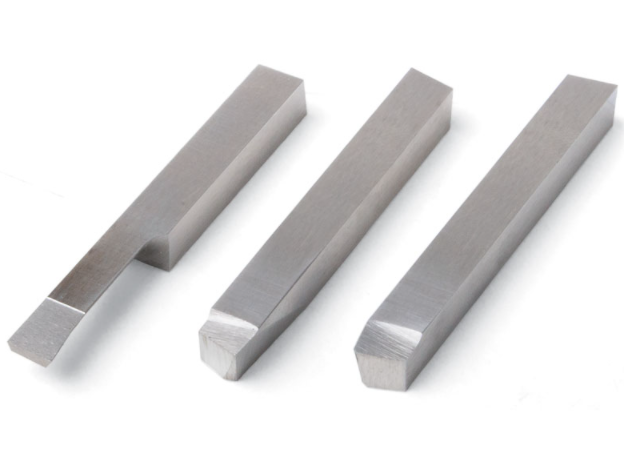Different Materials of Turning Tools – Types of Cutting Tools in CNC Turning
In this article, we'll take an overview of 7 types of materials for making CNC turning cutting tools.

Different Materials of Turning Tools – Types of Cutting Tools in CNC Turning
1. High carbon steel
A high carbon steel turning tool is a kind of carbon steel with a carbon content of 0.8% ~ 1.5%. It is used after quenching and hardening. Because the friction in cutting is easy to temper and soften, it is replaced by other tools such as high-speed steel. Generally, it is only suitable for cutting soft metal materials. The commonly used ones are SK1, SK2, sk7, etc.
2. High-speed steel
High-speed steel is a steel-based alloy commonly known as a white turning tool. It is made by adding W, Cr, V, CO, and other alloy elements to carbon steel with a carbon content of 0.7 ~ 0.85%. For example, 18-4-4 high-speed steel contains 18% tungsten, 4% chromium, and 4% vanadium. The friction heat generated in the cutting of high-speed steel turning tools can be as high as 600 ° C, which is suitable for turning under 1000 rpm and threads. Generally, high-speed steel turning tools such as skh2, skh4a, skh5, skh6, and skh9 are commonly used.
3. Noncast iron alloy
This is an alloy of cobalt, chromium, and tungsten. Because it is difficult to cut, it is made by casting, so it is also called super hard cast alloy. Its hardness is not affected at 8200C, and its heat resistance is far higher than that of high-speed steel. It is suitable for high-speed and deep cutting.
4. Sintering carbonization
The carbide tool is a product of powder metallurgy. The main component of the tungsten carbide tool is 50% ~ 90% tungsten, and titanium, molybdenum, tantalum, etc. are added as the binder, and then heated and sintered. The hardness of carbonized tool is higher than that of any other material, three times that of * * hard high carbon steel. It is suitable for cutting hard metal or stone. Because its material is brittle and hard, it can only be made into flakes and then welded to the more flexible handle. In this way, when the blade is passivated or cracked, another blade or a new blade can be replaced. This kind of sufficient turning tool is called an abandoned turning tool.
According to the different cutting properties of the international standard (ISO), carbonized cutting tools are divided into three categories: P, M, and K, and are identified by blue, yellow, and red colors:
Type P is suitable for cutting steel. There are six types: P01, P10, P20, P30, P40, and P50. P01 is a high-speed fine turning tool with a small number and high wear resistance. P50 is a low-speed rough turning tool with a large number and high toughness. The tool handle is painted blue to identify it.
Type K is suitable for cutting brittle and hard materials such as stone and cast iron. There are five categories: K01, K10, K20, K30, and K40. K01 is a high-speed fine turning tool and K40 is a low-speed rough turning tool. The handle of this type of tool is painted red for identification.
Type M is between class P and class K, which is suitable for cutting materials with high toughness. This kind of tool shank is painted yellow to identify it.
5. Ceramic
The ceramic turning tool is made of aluminum oxide powder, adding a small number of elements, and then sintering at high temperatures. Its hardness, heat resistance, and cutting speed are higher than those of tungsten carbide. However, because of its brittleness, it is not suitable for discontinuous or heavy turning and is only suitable for high-speed finishing.
6. Diamond
For advanced surface processing, the round or industrial diamond with an edge on the surface can be used for polishing. A smoother surface can be obtained, which is mainly used for the precision turning of copper alloy or light alloy. A high speed must be used during turning.
7. Boron nitride
Cubic boron nitride (CBN) is a material popularized in recent years. Its hardness and wear resistance are second only to diamonds. This tool is suitable for processing hard and wear-resistant ferroalloys, nickel-based alloys, and cobalt-based alloys. Turning tools can be divided into outer circle, shoulder, end face, grooving, cutting, thread, and forming turning tools according to their uses.
